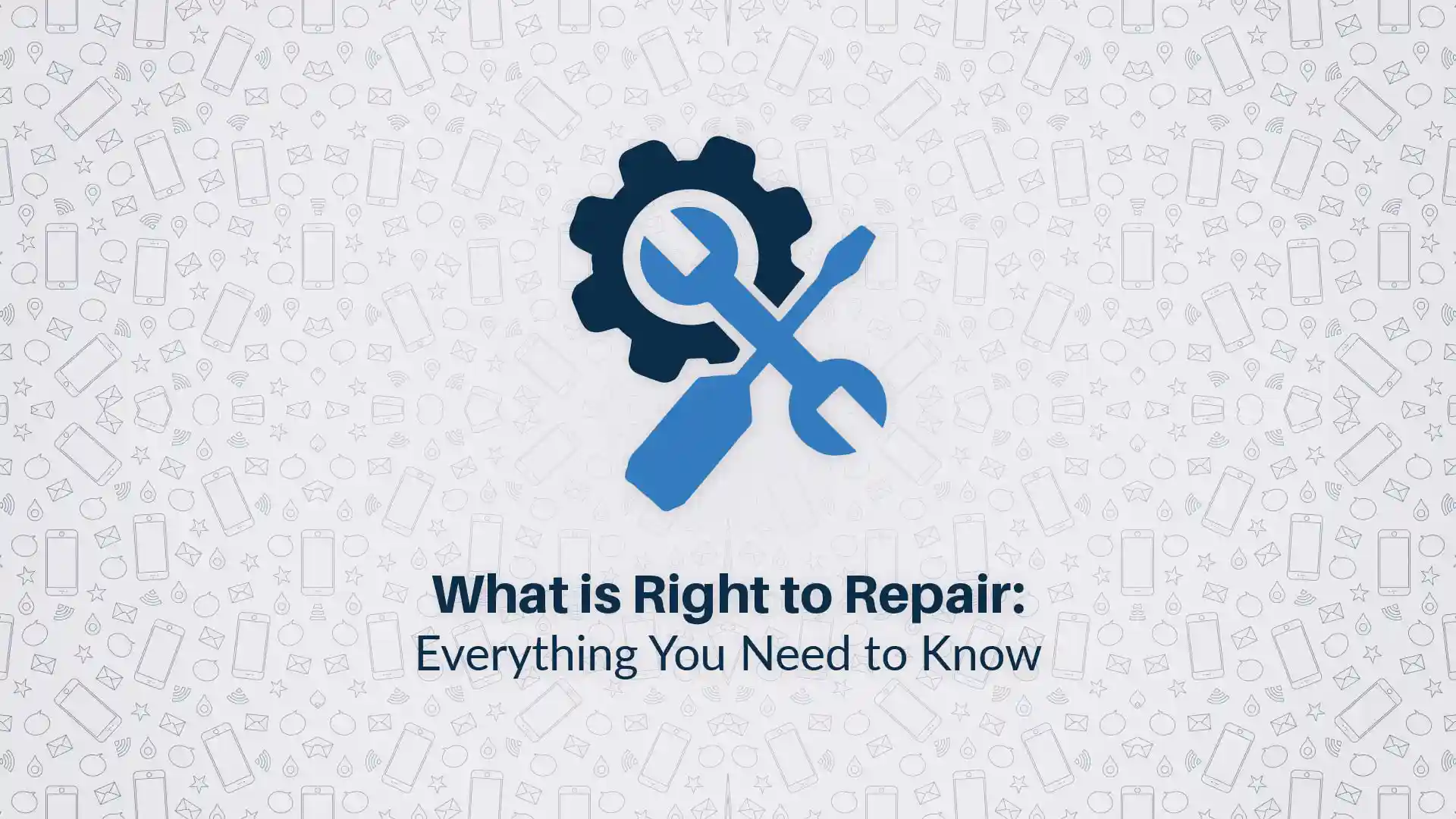 2085.0 views
2085.0 views
India Introduces 'Right to Repair' Legislation to Reduce E-Waste and Empower Consumers
Have you ever been in a situation where you had to shell out a significant amount of money to repair your electronic device? You tried the local repair shops, but they didn’t have access to the original parts. It can be frustrating, right? Well, the 'Right to Repair' legislation is here to change that.
The Department of Consumer Affairs announced in 2022 that a committee chaired by the Additional Secretary, Nidhi Khare, will set up a framework for "Right to Repair". And today, here we are with the Right To Repair platform by the Government of India. This legislation will give customers the ability to modify or repair their own electronic devices, empowering them to choose affordable repair options without voiding the official warranty.
Before understanding what the legislation covers, let's first understand why this legislation was the need of the hour in India.
What's the Need for the Right To Repair Legislation in India?
- Environmental Concerns: In FY22, India generated an estimated 16,01,155.36 tonnes of e-waste. Only 527,131.57 tonnes (or about 33%) were collected, dismantled, and recycled. This means 67% of e-waste was left unprocessed. By allowing consumers to repair and maintain their devices, the "Right to Repair" legislation can reduce the amount of electronic waste generated in the country. This could have a significant impact on the environment and human health.
- Cost Savings: Repairing a device is often much cheaper than replacing it. The high cost of repairs and maintenance by authorised service centres is often prohibitive, and many consumers buy new devices instead. The "Right to Repair" legislation would allow third-party repairers to offer cheaper and more accessible repair services, providing consumers with an affordable alternative.
- Job Creation: The Right to Repair legislation could lead to the creation of new jobs in the repair and maintenance sector. This would require the development of new skills, such as electronic repair, which could be a viable option for people looking to enter the workforce. Additionally, the legislation could encourage training programs and apprenticeships to develop a skilled workforce for the repair and maintenance industry. The platform has a section for skill development where people can register as a trainee or a trainer.
- Consumer Choice: Currently, many device manufacturers restrict access to parts, tools, and information needed for repair and maintenance. This limits consumer choice and forces them to use authorised service centres, which can be expensive and time-consuming. The Right to Repair legislation would give consumers more control over their devices, allowing them to choose where and how they want to repair and maintain their devices.
This movement is a response to the dominance created by electronic manufacturers who make it difficult for customers to repair their devices. They often make it difficult to obtain spare parts or access the necessary technical information, forcing customers to go to expensive official service stations or, worse, buy a new device altogether.
Under the Right to Repair legislature, companies would be required to provide customers with the necessary tools and spare parts to carry out basic repairs. This would empower customers to fix their devices and lead to less electronic waste as more devices would be repaired instead of being thrown away.
Products Covered within the Right to Repair
Right to Repair covers mobile phones, tablets, consumer electronics, farming equipment, automobile and consumer durables.
Some brands registered under Right to Repair are:
- Apple
- HP
- Samsung
- Oppo
- boAt
- Kent
- Honda
- Hero Motocorp
- Havells
- Microtek
- LG
- RDP
- Panasonic
- SSP Computers
- TAFE Motors and Tractors
- Luminous
Rules Imposed Under the Right to Repair Legislation
Considering the approach followed by the governments of the US and UK, India is now taking up the same rules to ensure the 'Right to Repair' promotes economic value for the consumers. The rules that mobile phone manufacturers should adopt on priority are:
1. Construction Rule
The smartphone or any electronic gadget should undergo an accessible design and construction to allow easy repairs for basic problems. The users should be able to use the service manual and given tools for accessing the problematic areas of the smartphone and try & fix it from home.
2. Accessibility to Spare Parts
Both independent repair providers and consumers should have easy access to available tools or spare parts for approaching the repair and modifying needs. Moreover, if there is a need for upgrading any software, then the manufacturers should make it available to both parties as well. In this way, the products can be repaired in fair conditions.
3. No Hindrances due to Software
The software programming of mobile phones should not hinder the overall repair approach. All repairs should be possible from the design end to the maximum extent possible.
4. Clear Communication by the Manufacturer
Upon owning a smartphone or an associated electronic gadget, the manufacturer will give you information about the product and its repairability possibilities. The repair functions that you can approach yourself should be guided right from the beginning.
Conclusion
The Right to Repair movement is gaining momentum in India, with the government working on developing a detailed policy that considers the interests of consumers and manufacturers. According to HCL co-founder Ajai Chowdhry, "Pushback from manufacturers will be inevitable, as seen globally. Something like this takes time because there will be a lot of naysayers." However, manufacturers who have joined the government's portal see 'Right to Repair' as a way to strengthen after-sales services and build credibility and trust to make their industry future-ready. Right to Repair can empower independent third-party repairers, make it easy for consumers to get repairs, provide employment opportunities, and minimise security risks.
In conclusion, the 'Right to Repair' legislation is a game changer for product sustainability, employment, and customer empowerment. It's time to take control of our electronic devices and repair them rather than just throwing them away and buying new ones.
We'll keep you updated on this story!
Stay Connected with Prune for more such updates.




 Home
Home Buy SIM
Buy SIM




